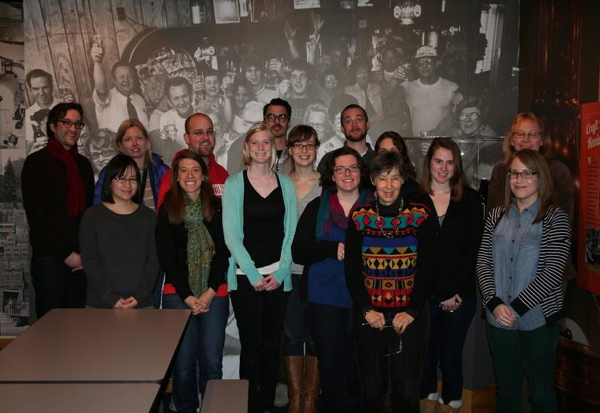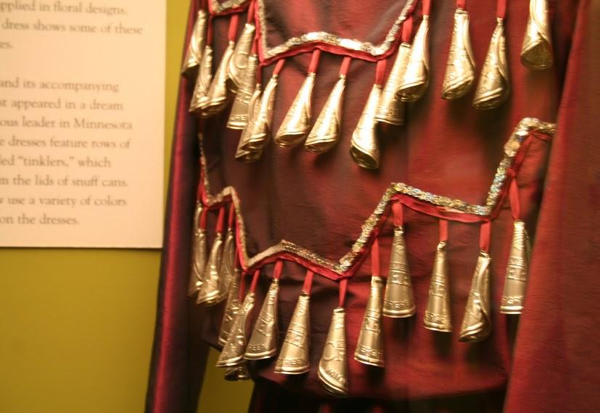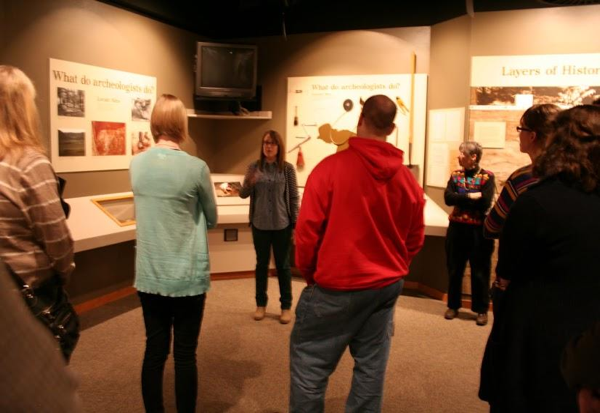
This week, the TLAM-ers went to the Wisconsin Historical Museum to explore issues relating to Native American artifacts in museums. Specifically, Jennifer Kolb, the Museum Director of the Wisconsin Historical Museum, gave a presentation and spoke of her experiences with the repatriation.
The Native American Graves Protection and Repatriation Act (NAGPRA) is a federal law passed in 1990 with the purpose of providing a framework and process for museums and federal agencies to return specified Native American cultural artifacts–human remains, funerary objects, sacred objects, or objects of cultural patrimony– back to tribes and tribal lineages.
The Wisconsin Historical Museum has been working on repatriation efforts in compliance with NAGPRA for over twenty years, and in the course of these efforts, have identified over 7,000 objects, 1 million archaeological objects, and 833 individual within state collections that are all eligible for NAGPRA. So far, the museum has returned almost 200 individuals to tribal lineages.
Jennifer Kolb has described the process of NAGPRA repatriation as an exercise in trust, relationship building, firm communication, and respect to tribal nations. Although the process of repatriating cultural objects can take years of negotiations and mountains of paperwork, the staff at the Wisconsin Historical Museum have expressed how meaningful and important the work of NAGPRA is to connecting people with their culture and history.
In addition to the honest talk about the NAGPRA process, the TLAM-ers had the opportunity to explore the exhibit about Native Americans. Part of the class time was spent thinking about ways in which the Wisconsin Historical Museum could revamp their exhibit to portray Native Americans in a modern light. With all the wonderful efforts going on in Wisconsin to revitalize Native languages, create culturally sensitive curriculum with Wisconsin school children, and incorporate a history of the state that represents its first inhabitants, it seems that the museum will soon be following suite.
 A Jingle Dress at the People of the Woodlands Exhibit
A Jingle Dress at the People of the Woodlands Exhibit
In spite of all the budget cuts around the state, the Wisconsin Historical Museum isn’t putting this project on the back-burner. Soon, the Native American exhibit will feature sections about Native American artists and Native American languages around the state. This will help bring native American culture out of the history books and into the forefront of people’s minds, establishing the modern identity of Native Americans that is often neglected in cultural institutions.
 TLAM-ers learning about upcoming changes to the People of the Woodlands Exhibit.
TLAM-ers learning about upcoming changes to the People of the Woodlands Exhibit.
I was very proud to witness firsthand what a state institution can accomplish, in spite of massive budgetcuts, understaffing, and lack of support. The Wisconsin Historical Museum has gone to great lengths to create responsible relationships with Native Americans living in this state, and to ensure that cultural heritage is respected and preserved.
Interested in NAGPRA? Or museums’ relationships with Native Americans? Give these readings a try.
Bowechop, J. & Erikson, P. (2005). Forging indigenous methodologies on cape flattery: The makah museum as a center of collaborative research. The American Indian Quarterly 29(1), 263-273. Retrieved December 7, 2010, from Project MUSE database.
Lonetree, A. (2012). Decolonizing museums: Representing native America in national and tribal museums. Chapel Hill: University of North Carolina Press. (pp. 1-28, 123-175)
Mithlo, Nancy Marie. (2004). “Red man’s burden”: The politics of inclusion in museum settings. The American Indian Quarterly 28(3), 743-763. Retrieved December 7, 2010, from Project MUSE database.
Molloy, P. (2003, October 20). National NAGPRA Program – Frequently Asked Questions. Retrieved January 18, 2011, from http://www.nps.gov/nagpra/FAQ/INDEX.HTM
-Leslie Nellis
